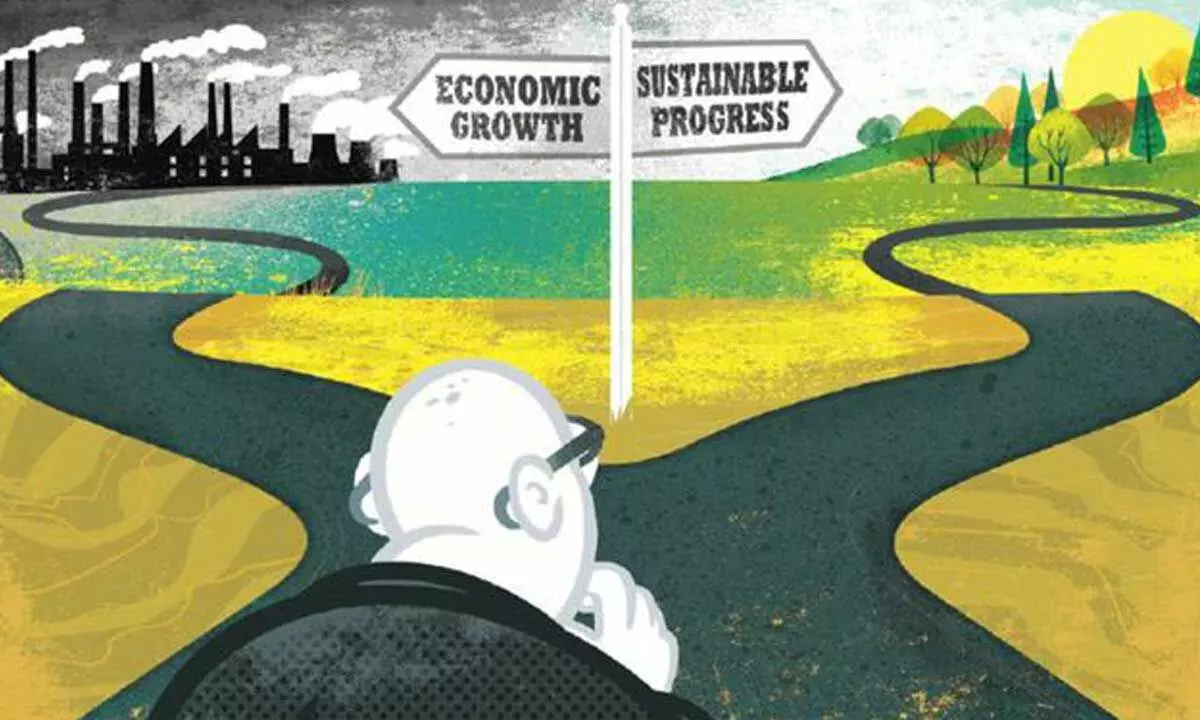Shaktikanta Das’s Perspectives, 2023: Price Stability as the Foundation for Sustainable Growth

Shaktikanta Das’s Perspectives, 2023: Price Stability as the Foundation for Sustainable Growth
Shaktikanta Das, governor of the Reserve Bank of India (RBI), stated on Thursday that maintaining pricing stability is crucial for sustaining the nation’s economic growth.
“Sustainable growth must be based on price stability. Any increase you attempt to attain in the near term can only last a limited time without pricing stability, according to Das.

The macroeconomic and monetary policies of the RBI, he said, have been centred on preserving price stability, guaranteeing sufficient credit flow to maintain the growth pace, and preserving financial stability.
Das predicted that vegetable prices will begin to decline “appreciably” starting in September during the 29th Lalit Doshi Memorial Lecture on “Building Blocks for a Sustainable Future: Some Reflection.”
He also emphasised the need of keeping an eye out for any threats to price stability and taking prompt, appropriate action.
Consumer pricing index (CPI) data for July in India shows that food price shocks caused headline inflation to soar to a 15-month high of 7.44%. According to Governor Das, tomato prices increased by 201.5%, driving a 37.3% YoY increase in vegetable costs.
Food category inflation increased by more than a half from 4.7% in June to 10.6% in July, reflecting these factors. Positively, core inflation decreased by almost 130 basis points (bps) from its most recent peak in January 2023, albeit it is still high at 4.9%, according to Das, showing that the transmission of monetary policy rate actions is still going on.

“Looking ahead, the price of tomatoes is leading a fall in vegetable prices following the July price increase. Along with proactive supply management in the case of onions, newly delivered tomatoes in mandis are already bringing down costs, according to Governor Das.
While the development of the monsoon in July has boosted the chances for Kharif crops, the cumulative rainfall has once again dipped into deficit territory. In addition, thanks to significant supply side initiatives, the prognosis for grain prices has also “brightened”.
However, unexpected meteorological occurrences like El Nino and resurgent geopolitical tensions cast doubt on the prospects for food prices.
“Given the likely short-term nature of the vegetable price shocks, monetary policy can await the dissipation of the first-round effects of such shocks that may produce short-lived spikes in headline inflation,” Das said.
The RBI will remain vigilant to ensure that second order effects in the form of generalisation and persistence of inflation are not allowed to take hold.
Furthermore, supply-side actions that are ongoing and timely have a crucial role in reducing the intensity and length of such rapid shocks in food prices.
“Under such conditions, one must be alert for any threat to price stability and take prompt, appropriate action. We are still completely committed to getting inflation to the desired level of 4%, he added.
The Governor also emphasised that the regulator has made a “conscious effort” to preserve external stability and build up FX reserves of about $600 billion in order to increase systemic resilience and efficiency.
According to him, these changes aim to do away with market segmentation, provide broader access for non-residents, increase participation, foster innovation, and assure client safety.
Additionally, steps have been done to internationalise the rupee and construct a “state-of-the-art” market infrastructure, including the trial launch of central bank digital currency (CBDC). According to Das, “the COVID crisis was transformed into an opportunity by leveraging the best benefits of digitalization.”
Last but not least, Governor Das added that in the next 25 years, India may have enormous development prospects in a number of industries, including agriculture, manufacturing, services, technology, innovation, and startups, and that this growth is supported by the country’s demographics.
Shaktikanta Das, the Governor of the Reserve Bank of India (RBI) in 2023, has once again emphasized the critical importance of price stability as a foundational pillar for sustainable economic growth.
In a world where financial markets are increasingly volatile and economies are more interdependent than ever, the discourse around price stability takes on new layers of complexity and urgency.

Price stability refers to the economic condition where prices of goods and services do not undergo extreme fluctuations. This means low and stable inflation, which is predictable over time, and ideally synchronized across various sectors of the economy.
When prices are stable, consumers and businesses can make long-term plans, thereby facilitating economic growth.
Unpredictable inflation rates can erode consumer confidence. When consumers are unsure about future prices, they are less likely to spend, which in turn can slow down the economy. Stable prices encourage spending and investment, both of which are crucial for economic growth.
When prices are stable, businesses find it easier to plan for the future, make capital investments, and hire additional labor. Price volatility can make these activities risky, which could lead to reduced investments and, consequently, lower economic growth.
For economies like India, which are increasingly interconnected with the global economy, price stability can also influence exchange rates and trade balances. Stability fosters a more favorable trade environment and can encourage foreign direct investment (FDI).
Under the leadership of Shaktikanta Das, the RBI has continued to use monetary policy as a tool to maintain price stability. Interest rates have been carefully managed to balance the dual objectives of controlling inflation and promoting economic growth.

Das also pointed out the role of technology in achieving better price stability. Advances in data analytics can provide more precise information on price movements, thereby enabling more effective policy interventions.
Inclusive financial policies are also a part of the RBI’s broader strategy under Das. Financial inclusion can mitigate the effects of inflation on the economically weaker sections of society, thereby contributing to overall price stability.
Das has emphasized the necessity for the RBI to work in close cooperation with the Government to ensure that fiscal policies are aligned with the goal of price stability. He suggested that targeted government spending can aid in controlling inflationary pressures.
While the emphasis on price stability is lauded, there are challenges and criticisms too. Some experts argue that a stringent focus on price stability could lead to neglect of other important economic indicators like employment rates.
Moreover, in a global economy, external factors such as geopolitical tensions and global recessions can also affect domestic price levels, making it difficult for a single country to maintain price stability.

The views of Shaktikanta Das on price stability offer valuable insights into the nuanced relationship between stable prices and sustainable economic growth.
By carefully managing monetary policies, embracing technological advancements, and fostering governmental cooperation, Das envisions a roadmap where price stability serves as the lynchpin for economic development.
Given the intricate economic challenges of our time, this perspective deserves careful consideration and thoughtful implementation.





